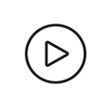We get it, you see a lot of medical newsletters, so hear us out. Once a month, we’ll highlight important medical news sprinkled with witty commentary, fun facts, giveaways, and more… because learning should be fun! Subscribe to receive the Morning Report directly.
Throwing Shade on Sunscreen Products
DERM DISCUSSIONS

A blistering review
According to the EWG, 75% of sunscreens on your local store shelves fail to provide adequate skin protection and may contain potentially harmful ingredients. The EWG lathers on the sunscreen critiques in a press release that seemingly scolds sunscreen marketers like they had just taken the car without permission. Here’s what your patients need to know:
- Avoid products with oxybenzone, vitamin A, and benzene
- Eschew all spray sunscreens
- Seek out products with zinc oxide and titanium dioxide
- Look for mineral-based products with an SPF value between 15 and 50
Key takeaway
Updated USPSTF Recommendation on Supplementation
GUIDELINE GUIDANCE

More than half of US adults take a dietary supplement, but are these consumers prolonging their lives or being duped by clever marketing? (We don’t mean to keep picking on marketers.) To answer this question, the US Preventive Services Task Force (USPSTF) did what it does best: pored over the latest evidence and issued new recommendations.
The task force hardly touched the delete button when revising its 2014 recommendation. Once again, it concluded the following for healthy, nonpregnant adults:
- Not enough evidence exists to weigh the benefits and harms of multivitamins, single supplements, or most paired supplements for the prevention of cardiovascular disease (CVD) or cancer (I statement)
- Do not use beta carotene supplements for prevention of CVD or cancer (D recommendation) because of a potential increased risk of lung cancer, cardiovascular mortality, and overall mortality
- Do not use vitamin E for prevention of CVD or cancer (D recommendation) because of a low likelihood of lowering the risk for mortality, CVD, or cancer
Key takeaway
Proving the absence of benefit is as difficult as declaring either Johnny Depp or Amber Heard a winner in the court of public opinion, but the best available evidence suggests that any benefit from supplementation is likely small. While patients may consider dietary supplements a “benign preventive product,” we can’t be sure of that. A corresponding editorial points out the glaring lack of government regulation of these products and the real possibility of harm. This recommendation is a reminder to always ask patients about their use of dietary supplements and to advise against beta carotene and vitamin E supplementation. Some patients may not want to hear this, but no magic pill can replace a good old-fashioned healthy diet.
Cartoon Caption Contest
If you think you have an amusing caption for the following image, please post it in the comments section of this Facebook post by Monday, July 4, at 11:59 pm ET for a chance to win our caption contest.
We will feature the winning caption, chosen by the Pri-Med team, in the next issue of Morning Report. Oh, and we’ll also send the winner a $50 Amazon gift card!* We know we have some creative readers, so give it a go!

Hat Trick in the Fight Against Cancer
CANCER CONCLUSIONS

We appreciate good news at Morning Report. The glass of lemonade we make with our lemons is always half full. And we believe that good things—not just bad things—come in threes. Check out these three uplifting news summaries on the cancer front.
1. Emerging blood test to determine liver cancer risk among patients with NAFLD
Researchers have developed a simple blood test that identifies which patients with nonalcoholic fatty liver disease (NAFLD) are at high or low risk of developing liver cancer. This is huge, given that approximately 25% of Americans with NAFLD have an increased risk of liver cancer, screening is not yet available, and current testing is invasive.
Key takeaway: One researcher called out the most important point: “This test was especially good at telling us who was in that low-risk group .… We can much more confidently say now that those patients don’t need to be followed very closely.”
2. Promising new immunotherapy drug for rectal cancer
The New England Journal of Medicine published the results from a phase 2 study in which 12 patients with mismatch repair-deficient locally advanced rectal cancer were treated with dostarlimab, an anti-PD-1 monoclonal antibody. All 12 patients experienced a clinical remission. We’re not math geniuses, but that appears to be a 100% success rate!
Key takeaway: More robust studies are needed, but this experimental immunotherapy drug proved life-changing for the 12 patients in the study and hopefully many more to come!
3. A healthy increase in cancer survivorship
The American Cancer Society and the National Cancer Institute reported encouraging stats from a recent study: as of the first of the year, more than 18 million Americans with a history of cancer were living in the United States. Of those, 12 million were 65 years or older. Unfortunately, with this high number of survivors came sobering data on the ongoing racial disparities that exist in cancer treatment and survival rates.
Key takeaway: Cancer survivorship is increasing not only because of advancements in screening and treatments but also because of a growing and aging population. According to the study’s lead author, this trend suggests “an increased need for guidance … on how to manage late and long-term effects of cancer and its treatment, maintain healthy behaviors and limit financial toxicity.”
Rapid-Fire COVID-19 Updates
COVID QUICK HIT
- Maternal vaccination and risk of hospitalization for COVID-19 among infants
- FDA advisers to weigh in on updated COVID booster shots for the fall
- COVID-19 tied to increased risk for Alzheimer’s, Parkinson’s disease
Less Screen Time in the Wonder Years
SPEDIATRIC PERSPECTIVES

If parents limited their children’s recreational screen time to ≤3 hours per week for two weeks, what would happen? Would children fill the newfound extra time with something more beneficial, like physical activity? Would neighborhoods suddenly resemble a bygone era of kids riding bikes and playing stickball until the dinner bell—a scene out of The Wonder Years?
If parents Researchers in Denmark sought to answer this question in a small randomized clinical trial. Children assigned to an intervention group of ≤3 hours per week of screen time increased their physical activity by approximately 45 minutes per day. Those in the control group (engaging in regular screen use) increased their activity by only 1 minute per day. The study showed no difference in sleep outcomes between the groups.
Key takeaway
It makes sense that less screen time equates to more physical activity. More physical activity then leads to lower rates of obesity and better health outcomes. Simple, right? Well, as most of us adults can attest, putting down the phone is easier said than done. But this study shows it may be worth it. One way to help parents limit their kids’ (and their) screen time is to encourage them to enable the “screen time” tracker available on most smartphones.
Don’t get us wrong—smartphones do have their benefits in those wonder years. Think of the aggravation young Kevin Arnold could have avoided by using his Uber app instead of getting a ride from his brother.
Interested in more healthcare news? Here are some other articles we don’t want you to miss:
- Calorie restriction with or without time-restricted eating in weight loss
- Tourism as a dementia treatment based on positive psychology
- Evidence-based recommendations on menopause management advise individualized care
- A comprehensive electronic health record-enabled smoking treatment program: Evaluating reach and effectiveness in primary care in a multiple baseline design
Morning Report is written by:
- Alissa Scott, Lead Author
- Aylin Madore, MD, MEd, Editor
- Margaret Oliverio, MD, Editor
Would you like to share your feedback with Morning Report? Drop us an email at morningreport@pri-med.com to let us know how we’re doing.
Please note that the summaries in Morning Report are intended to provide clinicians with a brief overview of an article, and while we do our best to select the most salient points, we ask that you please read the full article linked in each summary for clarification before making any practice-changing decisions.
Enjoying Morning Report? Subscribe & Share It With Your Colleagues!
Is Morning Report for you? It is if . . .
You’re someone who needs quick-hitting, accurate medical news and you’re a fun and witty healthcare professional who wants your news with some flare.
You don’t just need to know about the latest metabolism study–you also need to know how it parallels an Alanis Morissette hit. If you’re reading about acupuncture treatment, you need us to skip the needle puns and get right to the point. We keep things simple, but when we do get into the scientific weeds, we always remind you to check for ticks.
Subscribe to receive the Morning Report directly in your inbox the first Saturday of every month.
As a leader in CME/CE for 27+ years, Pri-Med provides evidence-based in-person and online CME/CE for primary care clinicians. Explore our education to earn credits and stay informed on the most current clinical strategies relevant to your daily practice.




